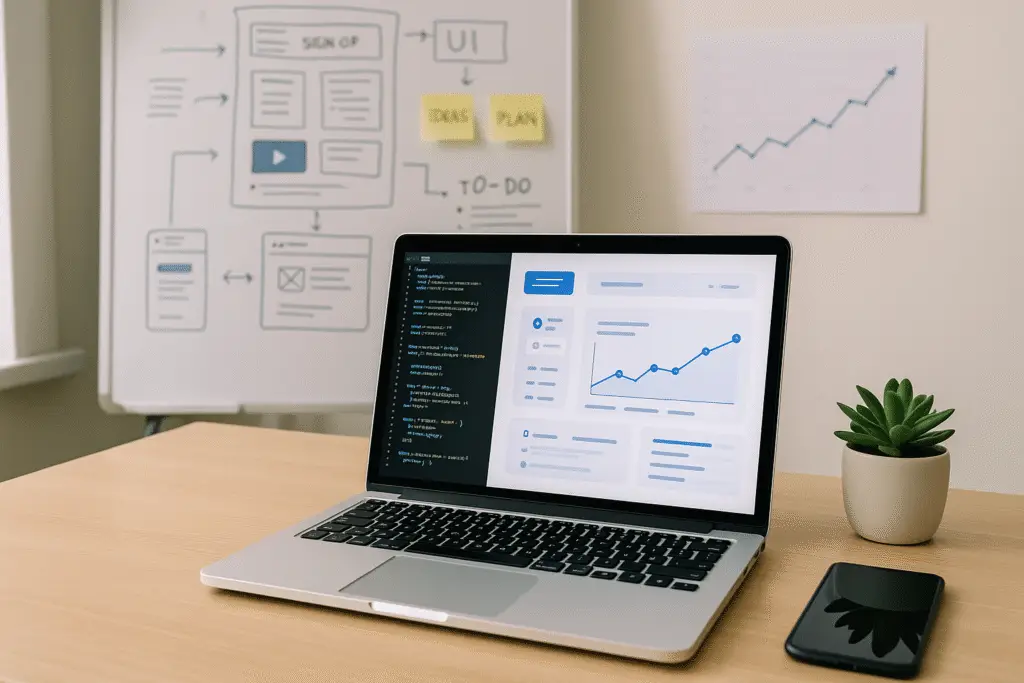Unlocking AI for SaaS Success
AI can significantly revolutionize the way aspiring entrepreneurs approach and succeed in starting and scaling Software as a Service (SaaS) businesses. In a compelling discussion led by Ras Mike, we uncover practical strategies to leverage advanced AI tools like Lovable and Supabase effectively. These tools not only simplify the building process but also enhance the overall user experience, making it crucial for entrepreneurs to understand their functionalities and integration capabilities.
Understanding the Role of Product Management in AI
To begin with, it’s essential to adopt the mindset of a product manager when working with AI tools. This shift in perspective is pivotal, as Ras Mike emphasizes that many entrepreneurs struggle due to a lack of clarity in what they need from these AI models. He likens the process of working with AI to that of a product manager collaborating with developers—product managers are tasked with defining core features and requirements, subsequently guiding developers to fulfill those needs. Therefore, when using AI, entrepreneurs must comprehensively outline the functionalities they desire. Simply inputting vague prompts such as “build me a SaaS” will likely result in a poorly executed output. Instead, the successful use of AI hinges on detailed specifications—understanding aspects such as user flows, features, and the core product.
Why You Need to Frame Your Approach as a Product Manager
Understanding the basics of web development further enhances one’s ability to use tools effectively. It is important to grasp the three primary components of a web application: the client side (the user interface), the server side (where processing happens), and the data storage side (where information is saved). For instance, when designing a landing page for a SaaS tool, an entrepreneur should be clear about whether the AI will need to set up user authentication, payments, and data persistence. This is where the integration of backend as a service (BaaS) providers like Supabase becomes vital. These platforms manage the database setup and handle authentication processes, allowing the entrepreneur to focus more on developing the front end and overall user experience.
The Importance of Knowing the Basics: Tech Fundamentals
In practical terms, Lovable introduces an innovative approach to swiftly set up full-stack applications with minimal coding. For example, a user can create a note-taking SaaS tool in just a few prompts and benefit from seamless integration with Supabase for backend functionalities. This means that setting up user accounts, managing notes, and ensuring data persistence becomes remarkably efficient. Instead of delving into complex coding, entrepreneurs can rely on Lovable to automate the more time-consuming tasks while they prioritize product design and user needs.
Comparing Backend Service Options: Supabase vs. Convex
Another exciting aspect of using Lovable is its potential to integrate real-time capabilities, particularly useful for applications requiring interactivity, such as chat services or collaborative tools. For this purpose, Convex can be used alongside Lovable, depending on the specific requirements of the application being developed. Both Supabase and Convex provide robust solutions, but entrepreneurs must assess their project needs to determine the best fit.
Moreover, one of the greatest advantages of these tools lies in their ability to expedite the launch of MVPs (Minimum Viable Products). With AI-driven platforms, entrepreneurs can experiment with different ideas, gather user feedback, and iterate more effectively compared to traditional development paths that often involve extensive coding and integration hurdles.
Intro to Lovable: Your Game-Changing AI Development Tool
As technologies continue to evolve and integrate, the essentials of good product management remain constant. This includes advocating for the user, understanding their needs, and effectively communicating those requirements when using AI tools. Entrepreneurs should concentrate on honing their skills as product managers—identifying pain points, defining clear user experiences, and crafting solutions that resonate with their target audience.
Looking ahead, the landscape of SaaS businesses is changing rapidly, with AI tools making it accessible for non-technical founders to create high-quality applications. The ongoing improvements in these platforms mean that learning the fundamentals of product management will have far-reaching benefits, equipping entrepreneurs to excel in an increasingly competitive market. By focusing on product definition, user experience, and leveraging AI capabilities, aspiring business owners can set themselves on a path to success in the dynamic SaaS landscape.
Building Your First SaaS App: Step-by-Step Using Lovable
Building a Software as a Service (SaaS) application requires understanding the foundational concepts of client-side, server-side, and database interactions. Each of these components plays a vital role in a web application, and understanding how they work together can significantly enhance your problem-solving capabilities and tool utilization.
Client-Side
The client-side, also known as the front end, is what users interact with directly. It comprises everything that users experience via their web browser, including design elements, user interfaces, and user experiences. When a user visits your SaaS application, they are interacting with the client-side.
Server-Side
In contrast, the server-side is where the application’s business logic resides. It handles data processing, serves client requests, executes computations, and directs data flow between the client and the database. The server also manages tasks such as authentication and API integrations.
Database
Lastly, the database is the storage system where all data is kept. Whether it’s user profiles, notes, or other user-generated content, the database is crucial for data persistence.
These three layers—client, server, and database—form the backbone of your SaaS application architecture. A clear understanding of each component not only enhances the development process but also helps identify potential issues.
Key Challenges: Security Considerations in Development
Security is a paramount concern in software development, particularly when it comes to handling user data. As developers and product managers strive to build applications quickly, they must understand and prioritize security from the outset.
One crucial aspect is that while rushing to build functionalities, they must configure settings properly to prevent unauthorized access and data breaches. It’s essential to consider the implications of third-party integrations and how they handle user data.
Another key practice is implementing role-based security and policies within the database management system. This adds an additional layer of protection by ensuring that only authenticated users or specific roles can access certain features or data.
Future of SaaS Development: Emphasizing Design and User Experience
The increasing importance of design and user experience (UX) in SaaS development cannot be overstated. A well-designed user interface (UI) can significantly influence how users interact with a product. Founders should start by thinking like product managers, even if they lack formal training in this area.
Understanding the role of product managers can help in framing necessary aspects of the application from the user’s perspective, including defining target audiences, identifying user needs, and determining essential features that provide value. Moreover, as the tools available for SaaS development advance, an increasing emphasis on the integration of design and user experience with functionality will be crucial.
Tools Mentioned
By familiarizing yourself with these essential tools—Lovable, Supabase, and Convex—you can equip yourself to navigate the sophisticated landscape of SaaS development. Each tool provides unique features that facilitate rapid development and enhance user experience. Understanding these tools will elevate your ability to create applications that not only function well but also resonate with users.
“`



